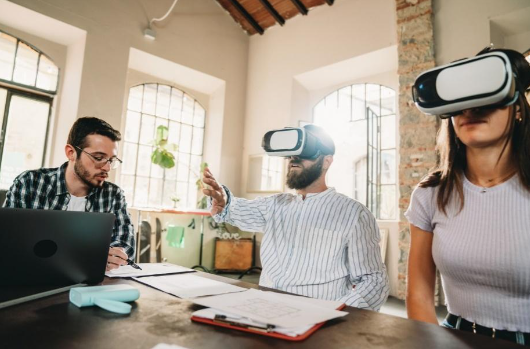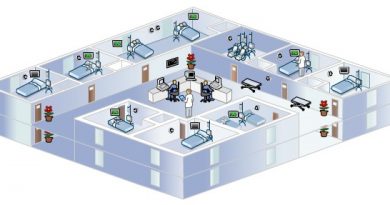Transforming healthcare education through simulation labs
Simulation-Based Learning (SBL) has revolutionized healthcare education, particularly nursing education. Simulation labs offer an unthreatening environment where novice nurses can gain simulated hands-on experience dealing with high-stakes situations they will eventually face in clinical practice. Simulated learning is an immersive, innovative, and interactive way of nursing education. As healthcare becomes increasingly complex, nurses now require more comprehensive learning models, such as simulation-based learning, to hone their craft effectively.
Historical background of simulation-based learning in nursing
Simulation in nursing education first debuted in the early 18th century with simple static mannequins to practice clinical skills, typically serving as models for anatomy teaching. By the mid-20th century, technological advancements enabled the creation of lifelike mannequins such as Resusci Anne that could simulate pulse and respiration patterns, opening up more complex training scenarios.
At that time, simulation-based learning quickly spread throughout the medical industry. Medical professionals quickly recognized the value of learning through making mistakes safely in an educational setting. Nursing education soon began incorporating simulation into its curricula as a learning strategy to develop critical thinking, problem-solving, and decision-making abilities; furthermore, it provided students with hands-on experience without risking patient safety.
The transition toward virtual reality
At the turn of the 21st century, nursing education underwent a dramatic revolution by introducing high-fidelity simulators – computerized mannequins capable of simulating various health conditions from normal physiological processes to acute medical emergencies – giving students more realistic training experiences than ever before.
Simultaneously, virtual reality (VR) has emerged as an invaluable teaching tool. VR immerses learners in computer-generated environments that recreate real-life scenarios, providing immersive interactive experiences. VR allows students to hone their skills before transitioning to actual patient care.
Emphasis on team-based learning
With patient safety being of primary importance, nursing education has increasingly focused on team-based Learning, and simulation exercises now include collaborative scenarios where nursing students work alongside healthcare professionals from other healthcare settings. This shift reflects the increased need for teamwork and communication within healthcare environments.
Moreover, interprofessional simulation activities also foster a culture of respect and understanding among healthcare teams, reinforcing each member’s crucial role while helping nursing students adapt to multi-disciplinary teams. Simulation-based learning in nursing has long been recognized as a means to improve patient outcomes with quality education.
What is a simulation lab in clinical nursing
Simulation labs are dedicated training spaces designed for healthcare students. Rockhurst University offers hybrid accelerated BSN programs with these labs as a special feature. They give healthcare students a platform for practice on responsive manikins that simulate human reactions, providing freedom to experiment through trial-and-error learning while assuring real patient safety is never compromised.
Pioneering a revolutionary approach to training, the simulation lab offers students a safe learning environment to experiment, practice and make mistakes without risking real lives. Carefully planned mock scenarios enable students to gain hands-on experience dealing with patient situations, further cementing their learning.
Simulation labs play a vital role in clinical nursing by helping bridge the gap between classroom learning and real-world experience. By providing a platform for experiential learning, nursing students can apply their theoretical knowledge to realistic patient-care scenarios while developing critical thinking and clinical decision-making capabilities – two essential skills of every nurse.
Moreover, the simulation labs are useful for more than just technical skills development—they also offer an avenue for developing soft skills such as communication, teamwork, and empathy through interaction with mannequins that provide instantaneous feedback to students on communicating effectively with patients., This produces competent and compassionate caregivers that can shape the future of healthcare delivery.
Benefits of simulation-based learning in clinical nursing
Clinical nursing is an ever-evolving profession that continues to meet patient care demands. One key tool that has revolutionized this profession is simulation lab technology; let’s now discuss its numerous advantages in clinical nursing education.
Amplifies practical skills
In a simulation lab, nursing students can practice various clinical procedures. By using mannequins or virtual reality interfaces, they can master techniques such as inserting an IV line or giving birth. Furthermore, this controlled environment eliminates the fear of making fatal mistakes; errors become invaluable learning experiences instead.
Furthermore, simulation provides a platform to rehearse rare, critical situations and ensure nurses respond accordingly when these instances arise. Thus, simulation strengthens technical skills, boosts confidence, and provides a deeper understanding of procedures.
Enhances decision-making
Effective decision-making is at the center of clinical nursing. Simulation-based learning accelerates this process by offering nurses numerous scenarios in which to practice assessing patients, interpreting data, and making prompt and informed decisions.
Moreover, nurses develop the critical skill of prioritizing tasks. By managing multiple patients in simulation and honing time and resource management skills, nurses transition seamlessly from theory to practice with strong decision-making abilities.
Build teamwork and communication
The lab also provides opportunities to build teamwork and communication skills. Nurses typically work in teams, so simulations incorporate this aspect. Simulations create scenarios that call for coordination, delegation, and effective communication among team members.
Additionally, post-simulation debriefs can provide invaluable learning opportunities. They allow the team to discuss the scenario, exchange views, and critique each other constructively – helping nurses express their ideas more clearly while understanding team dynamics and improving collaborative capabilities.
Reduces patient risk
Simulation can significantly decrease patient risk. Nursing students practice on mannequins before entering the real world until their skills reach proficiency. With simulation, students are better prepared for clinical rotations, reducing the likelihood of error. In this way, simulation-based learning in clinical nursing is crucial in enhancing patient safety.
Promotes reflective practice
Finally, simulation can foster reflective practice. Nurses can examine their performance and identify areas for improvement quickly, receiving immediate feedback to enhance both their skills and their knowledge rapidly.
Nurses can improve their professional development by reflecting upon their actions. Reflective analysis creates critical self-awareness that supports professional growth; nurses learn from successes and setbacks, becoming better clinical practitioners overall.
Conclusion
Simulation labs are an essential element of modern clinical nursing education. Simulation labs combine experience with theory, acting as an intermediary between classroom learning and clinical practice. There are many benefits, from developing technical skills to decision-making and teamwork to patient safety and reflective practice. Simulation-based learning has quickly become an invaluable method for training the next generation of clinical nurses.




